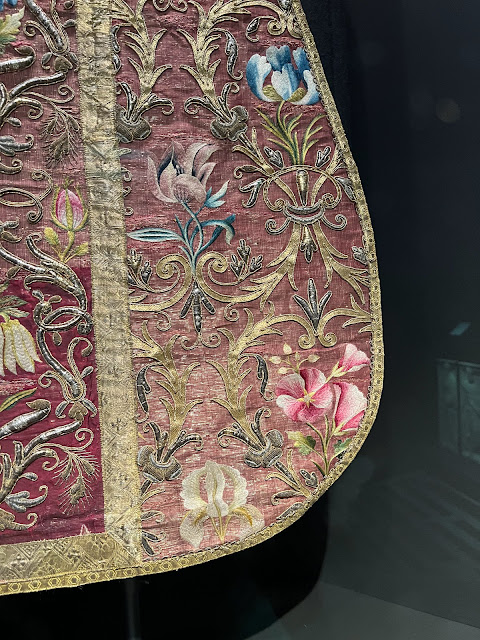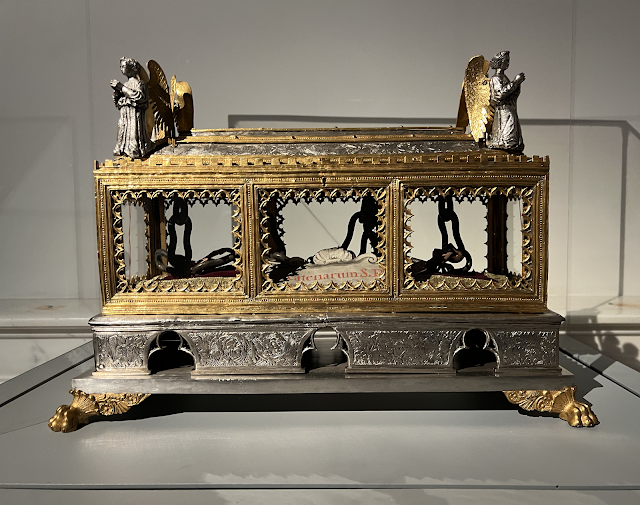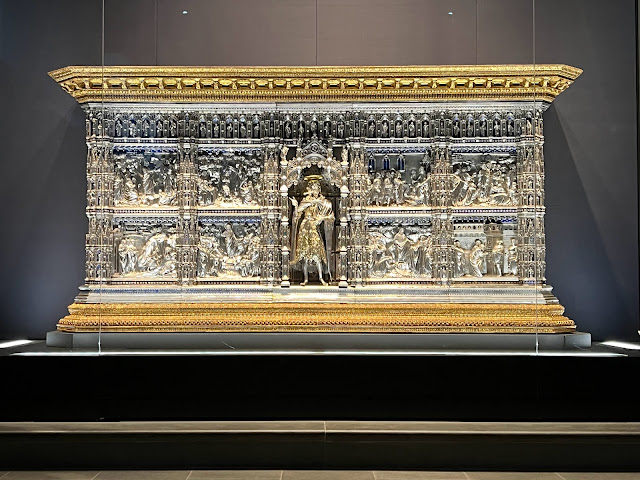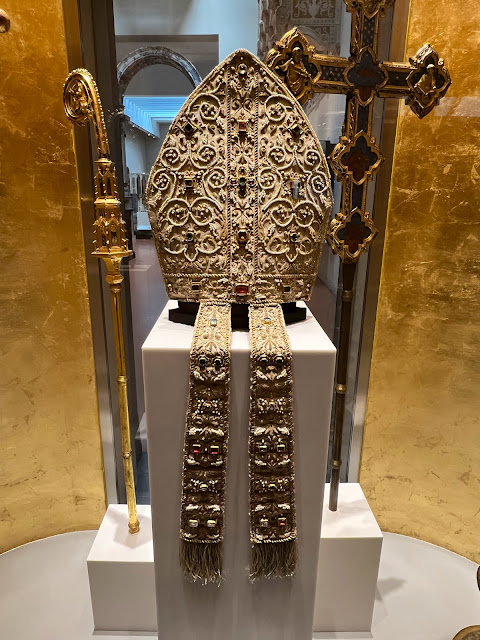Finding liturgical art is a task that is at once both easy and difficult. Obviously the easiest way to see liturgical art is simply to walk in a church itself and there you will be surrounded by it -- well, some of it at any rate. But if you're like myself, you want to see beyond the nave and want a peak as well into the sacristy where you will be able to see sacred vestments, reliquaries and other objects of interest that are reserved for liturgical use and not therefore seen simply by walking into a church. Opportunities such as these exist -- not always and everywhere bear in mind -- but you have to know where to look for them. In the city of Florence, if you wish to see items such as these you have a few options, but one which might escape your attention in the midst of Medici focused museums is the Opera di Santa Maria del Fiore museum which is located just behind the cathedral, nestled unassumingly in the midst of bisteccherias and gelaterias.
Taken at face value, one might think this museum is primarily focused upon remnants of the old, incomplete medieval facade of the duomo, and indeed, that is the aspect which is particular promoted by the museum itself. However, there is a great deal more contained within that museum, including a range of sacred vestments, numerous reliquaries, statuary, painted panels, illuminated books and so much more -- included the exquisite Farnese chasuble with its matching antependium.
Here, for your enjoyment, is just a small preview of the sorts of things you can expect to find in this museum, which is well worth the price of admission.
 |
| Two chasubles from the 18th century |
 |
| 18th century cope |
 |
| The following is a detail of the 18th century chasuble shown above. One can see how fine the embroidery work is, set on a red silk lamé. |
 |
| One of the various medieval illuminated chant books on display in the museum. |
 |
| Cope from the 18th century |
 |
| 15th century reliquary containing some of the chains of St. Peter. |
 |
| An aspergillum -- used for the sprinkling of holy water. |
 |
| A silver altar covering that has been dated to the 14th-15th century. |
 |
| This display shows the embroidered panel remnants of various renaissance era vestments. |
 |
| A chalice veil manufactured in Florence in the early 17th century |
 |
| Silver cross from the 15th century |
 |
| Early 16th century mitre of the Medici pope, Leo X |
 |
| The 17th century Farnese antepnedium |
 |
| The 17th century Farnese chasuble |


















